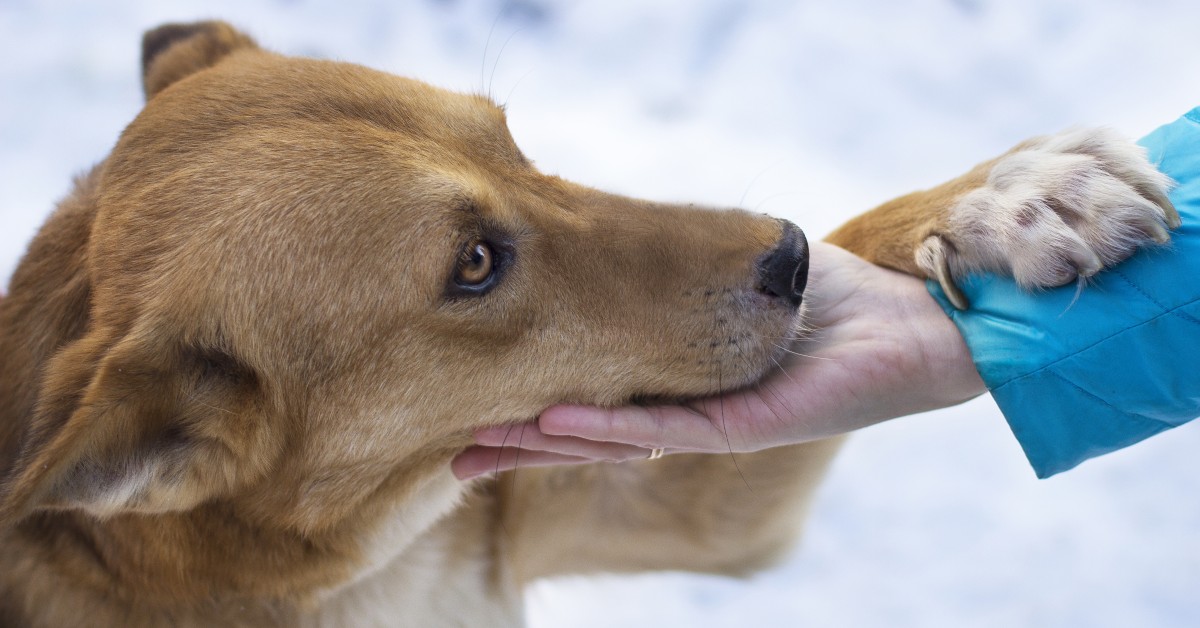Pet First Aid: How to Handle Emergency Situations in Winter
Cold weather can increase your pet’s risk of illnesses or injuries that require emergency first aid.

As a loving pet owner, you do everything you can to keep your furry companions safe. You may put your dog in a coat before walks, use pet-safe ice salt on the driveway, and keep them indoors when temperatures start to plummet. Unfortunately, accidents can and do happen in the winter, and some could leave your pet ill or injured. Knowing how to handle emergency situations in cold weather and perform proper first aid on your pet are essential skills to develop. Learn ways to manage pet first aid in the winter months.
Building a Comprehensive Pet First Aid Kit
When pet emergencies strike, you want to be ready. Prepare a first aid kit that includes all of the items you may need in the event that your pet, or another animal found on the street, is discovered ill or injured. Some items to include in a pet first aid kit include:
- Documentation – Keep a copy of your pet’s medical and vaccination records.
- Gauze – Lightweight medical gauze can help cover vulnerable wounds.
- Non-Stick Bandages – Self-adhering water-repellant bandages protect injuries without sticking to the fur.
- Adhesive Tape – Only use medical-grade tape that’s elastic and breathable.
- Hydrogen Peroxide – This first-aid antiseptic can be applied with gauze or cotton balls.
- Antiseptic Spray or Ointment – These healing sprays or ointments work fast to treat cuts, sores, rashes, dry skin, and more.
- Milk of Magnesia – This product can absorb and counteract consumed poisons.
- Thermometer – Pet-safe thermometers are waterproof and easy to clean.
- Scissors – A pair of sturdy scissors can be useful in a range of situations.
- Tweezers – Tweezers can help remove ticks or splinters.
You may also want to include other useful items, such as a flashlight, an extra leash and collar, travel bowls for food and water, towels, and a warm blanket.
Creating an Emergency Plan to Keep Your Pet Safe
Would you know how to react if your pet was in trouble, or you discovered another animal in need of medical care? Being prepared can make all the difference when faced with an emergency.
1. Have a List of Emergency Contacts Readily Available
Whether it’s on your phone or written on a piece of paper in your vehicle, having a list of important phone numbers can ensure that you reach the proper parties when you need them most. Emergency contacts for pets should include the phone number of your vet and local animal hospital. It’s always good to have backup pet hospital numbers in case the one closest to you is closed or unable to see your pet.
2. Make Sure Your Pet Always Has Identification
If your pet was found alone because he escaped from the home or got loose during a walk, you’d want the person who found him to be able to contact you as quickly as possible. Equip your pet’s collar with ID tags that include your current phone number and address. Ideally, your pet should also be microchipped. This allows the vet or rescue that receives your pet to get your contact information, even if the ID tags were lost along the way.
3. Stay Informed Of Weather Forecasts and Emergency Alerts
You’ll want to know how to prepare before an emergency occurs whenever possible. Many winter weather-related illnesses or injuries are related to the cold, whether that’s sheets of ice, snowfall, or sub-zero temperatures. Monitor the local weather in your area and keep an eye on the news for emergency alerts that could pose a danger to your pet. If the weather outside appears hazardous, plan to keep your pet inside until it passes or find ways to limit exposure.
Tips for Handling Winter Pet First Aid Emergencies
Winter pet emergencies can be frightening for both you and your furry friend. When you are prepared for such events, you can feel confident that your pet is in good hands. The following tips can help you handle winter pet first aid emergencies with composure:
- If your pet is bleeding, apply direct pressure to the wound with a clean cloth. If the bleeding is severe, bring your animal to the vet immediately.
- Having an evaluation plan for pets is essential. Know the phone number and address for a local pet-friendly hotel or have a designated place to stay if needed.
- If your pet has gotten into something poisonous or appears to be having an allergic reaction, contact your vet, emergency animal hospital, or pet poison center for instructions.
- If your pet is limping, it could be due to ice or snow buildup on the paws. Assess their condition and wipe away any snow or ice buildup. Regular winter grooming can help prevent snow and ice from sticking to the fur between the paw pads.
Responding to Winter Pet Emergencies with Confidence
No matter how well you prepare for winter pet emergencies, there is always a chance your pet could become ill or injured. It’s important not to panic in these situations, as your pet will likely see your concern and become stressed in return. Stay prepared, be informed, and keep your pet happy and healthy throughout the winter season.
Ready to start saving money on pet wellness care?
Then take a look at Mint Wellness, the pet wellness plan that provides fast reimbursement on routine pet care. Save on vaccinations, wellness exams, preventatives, dental, and more!
Learn More


